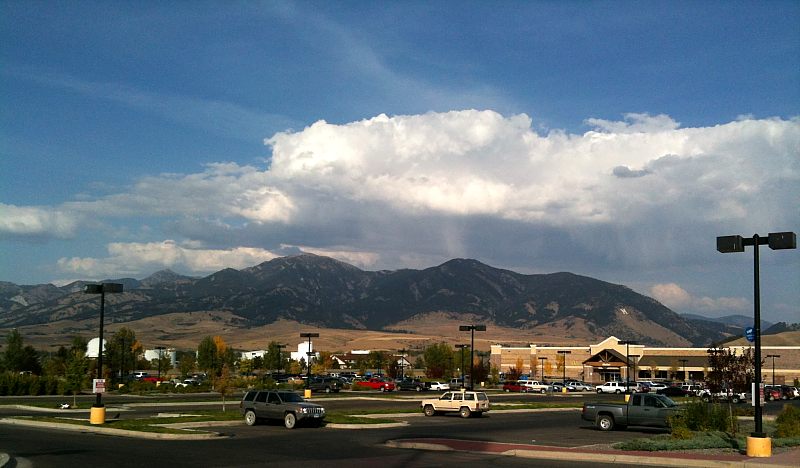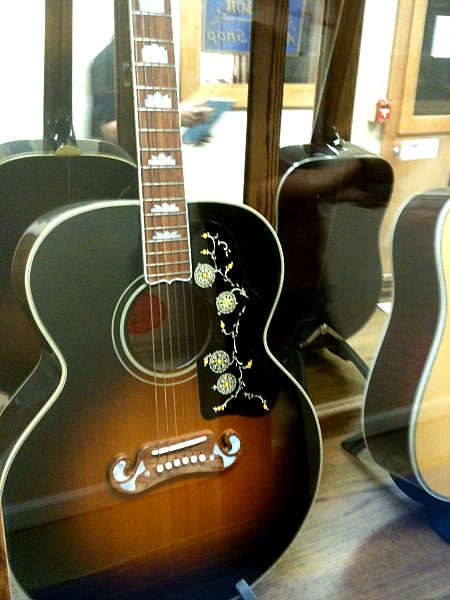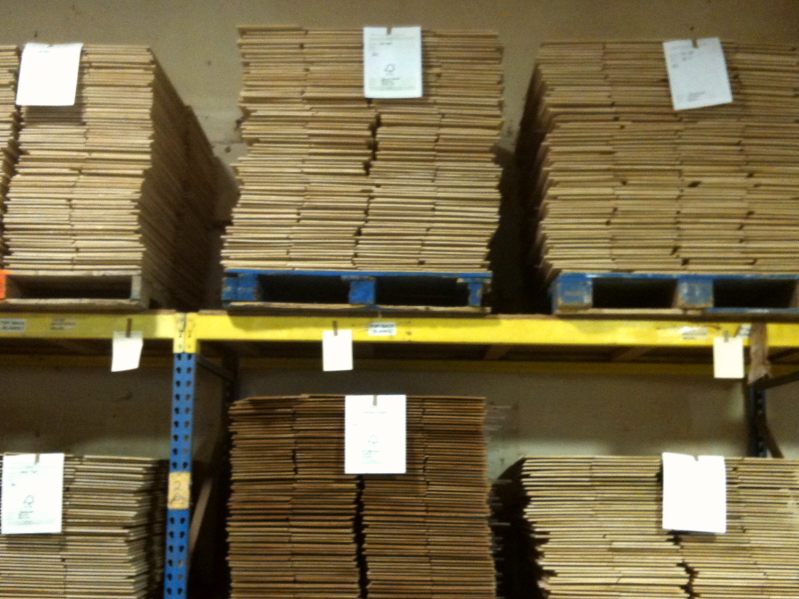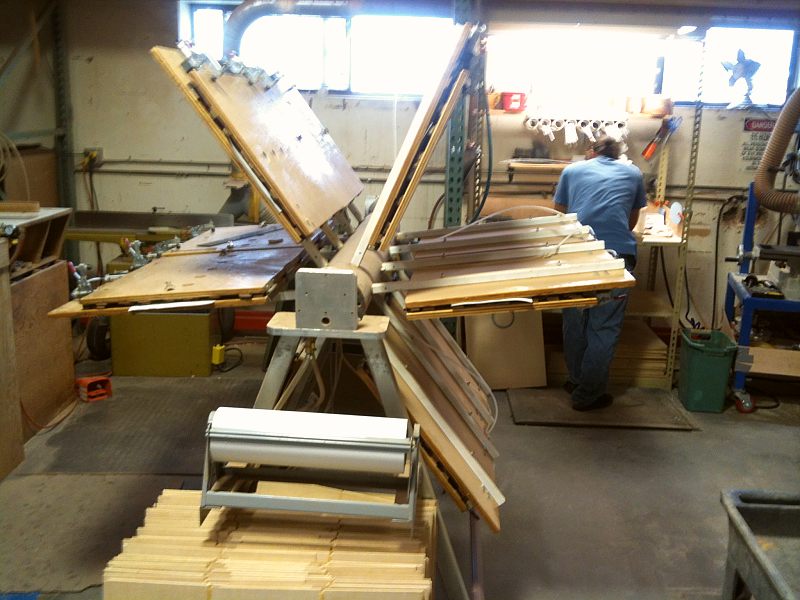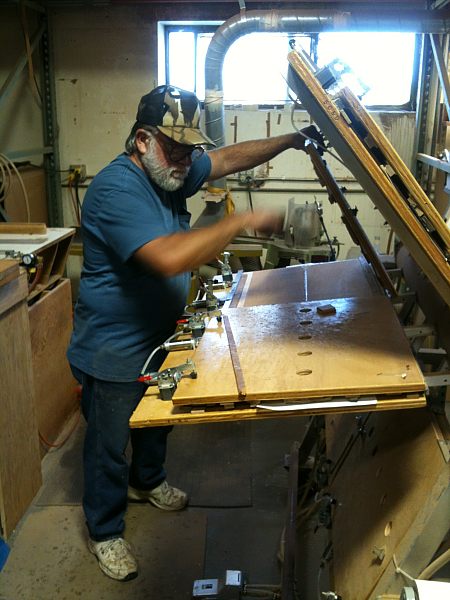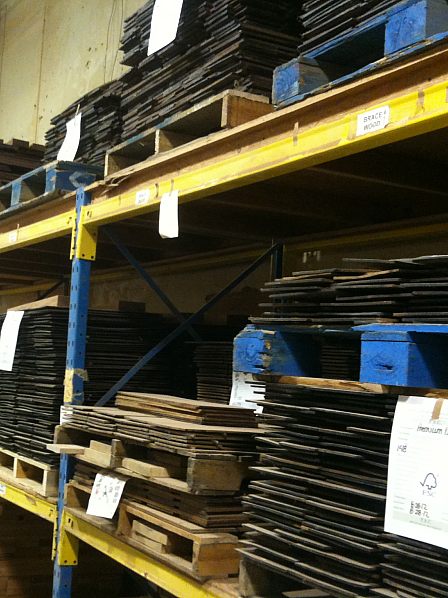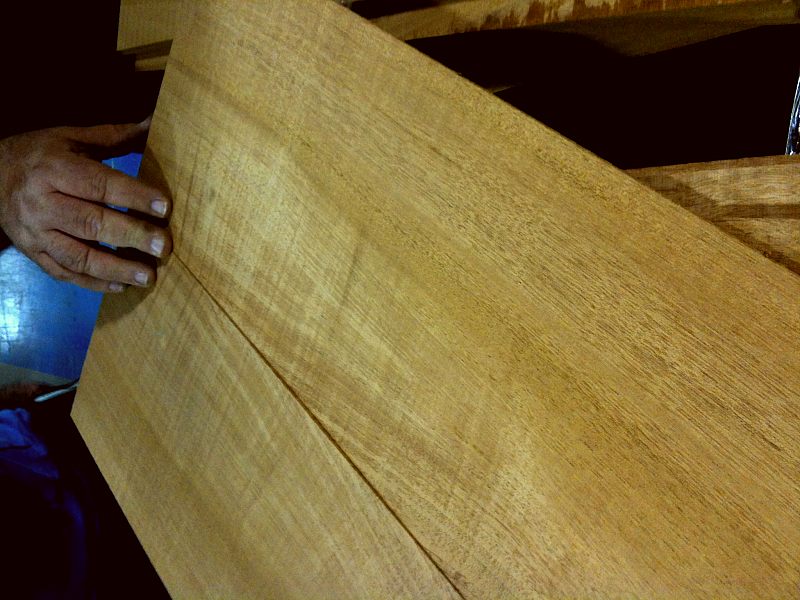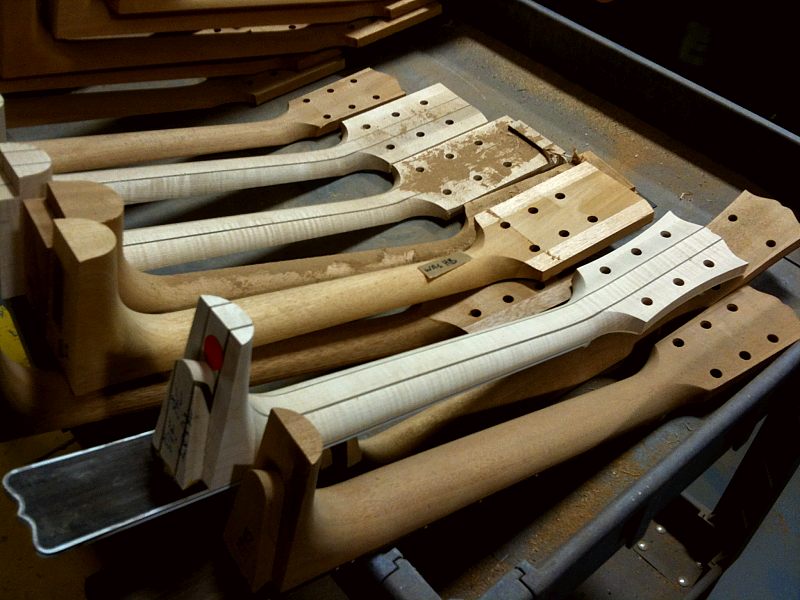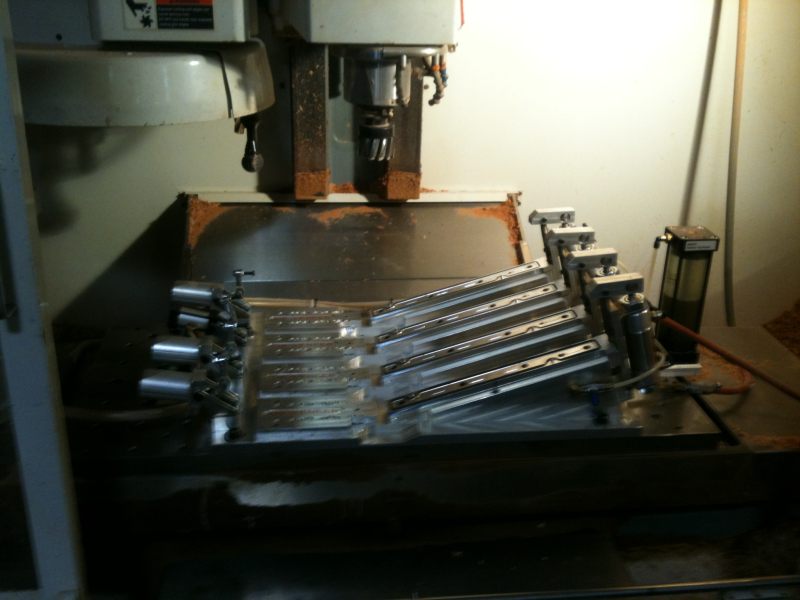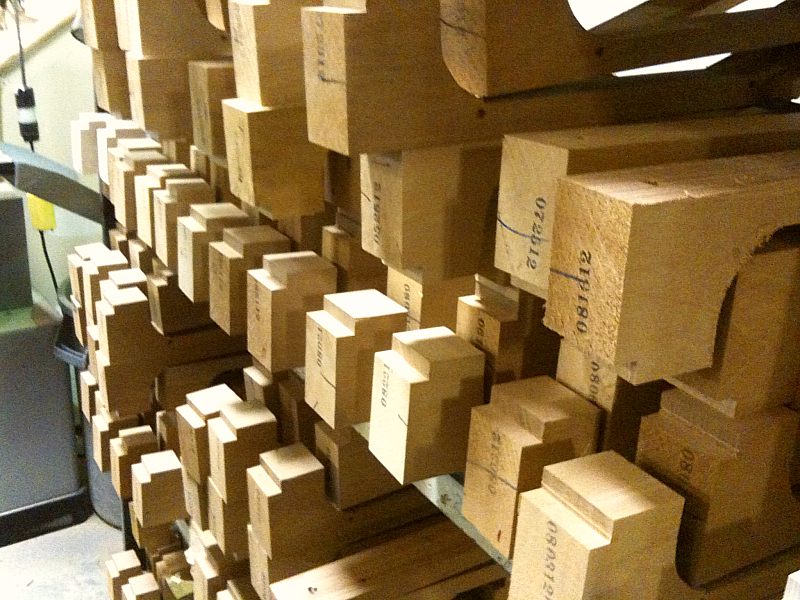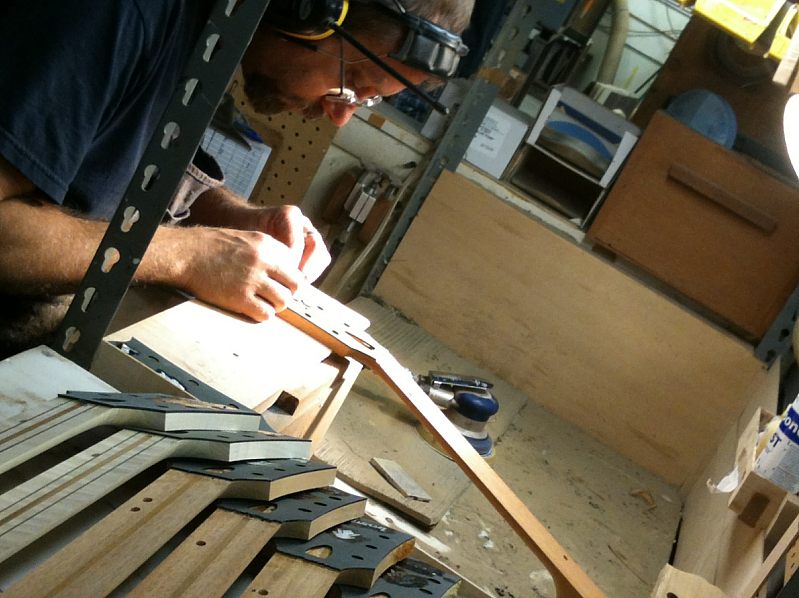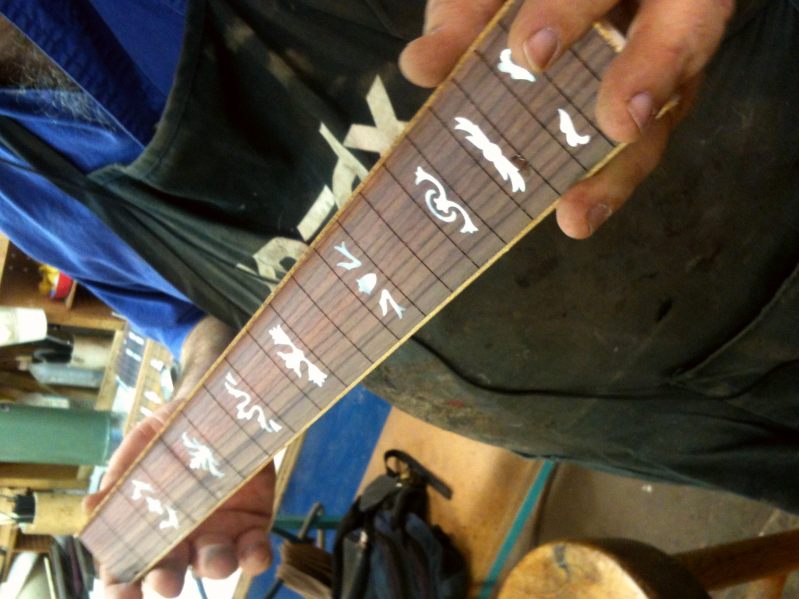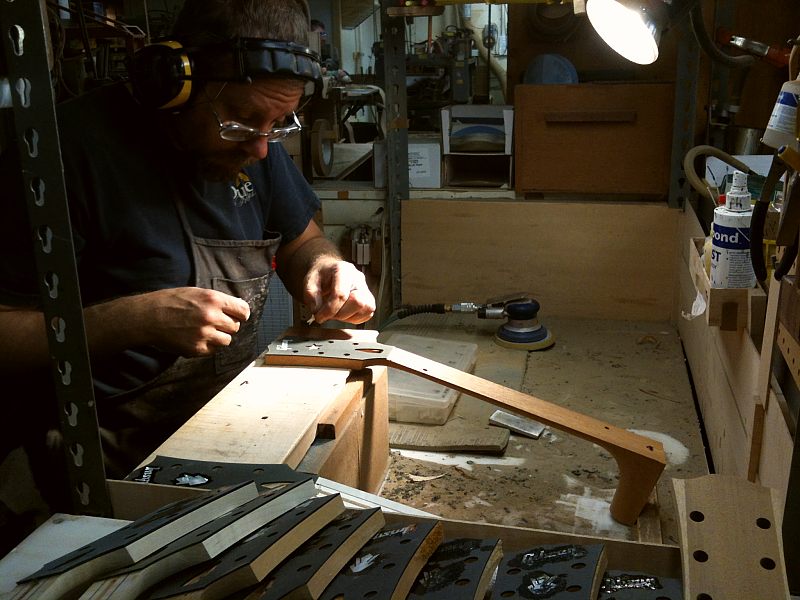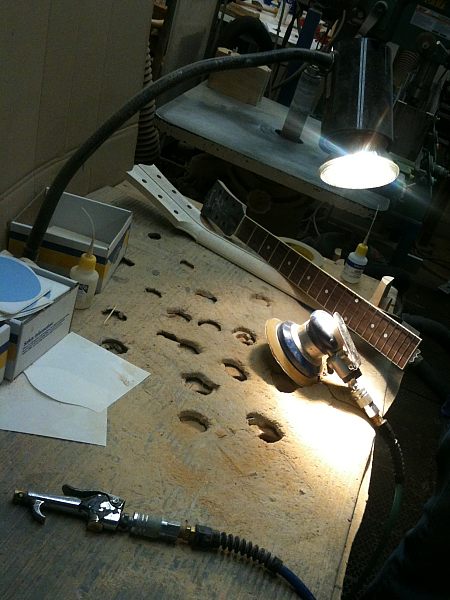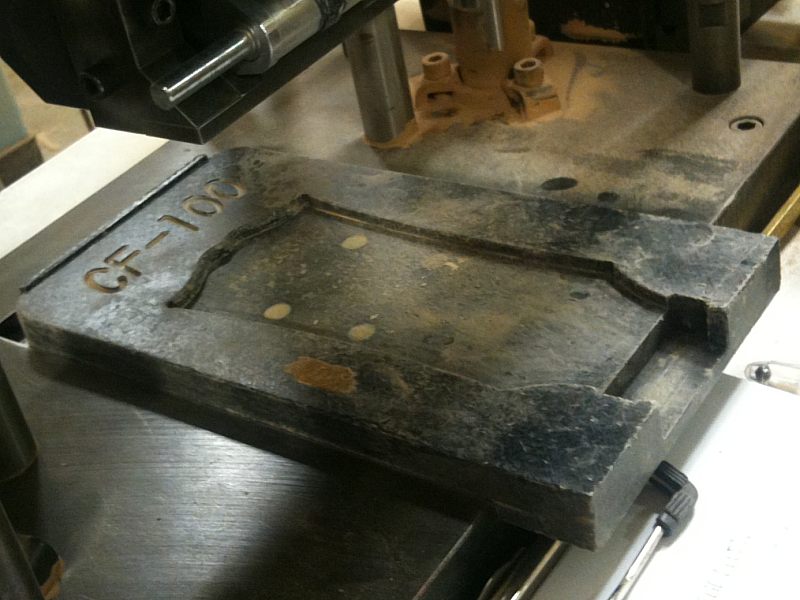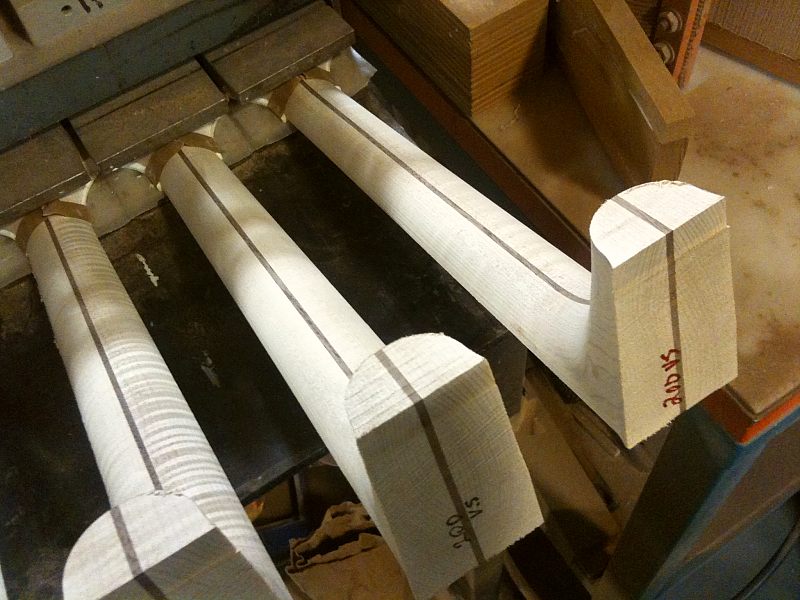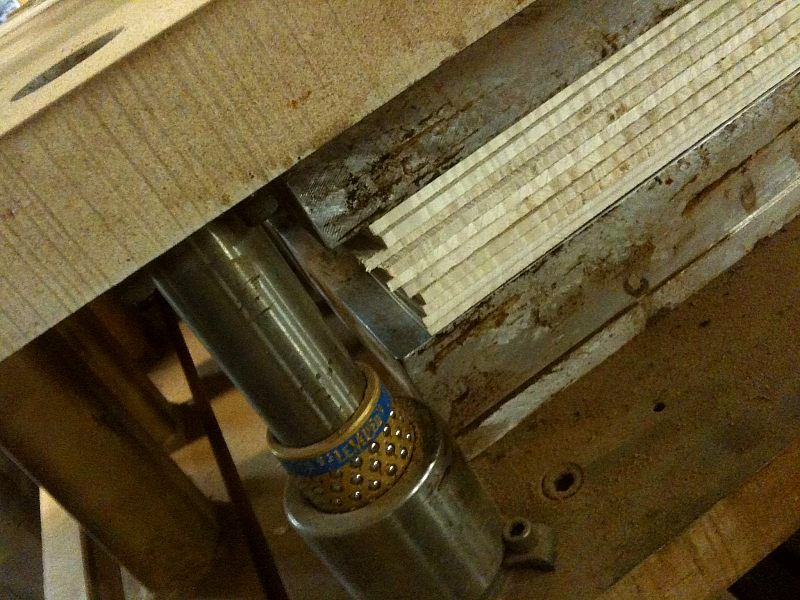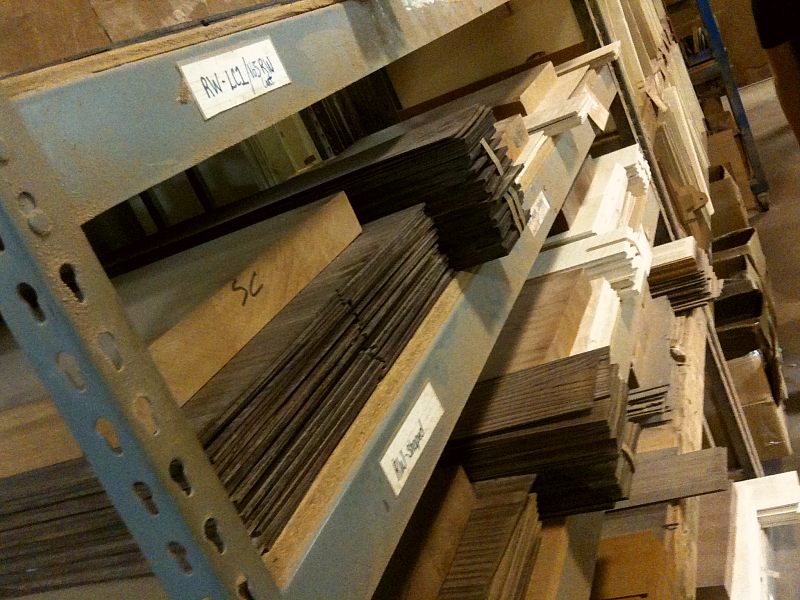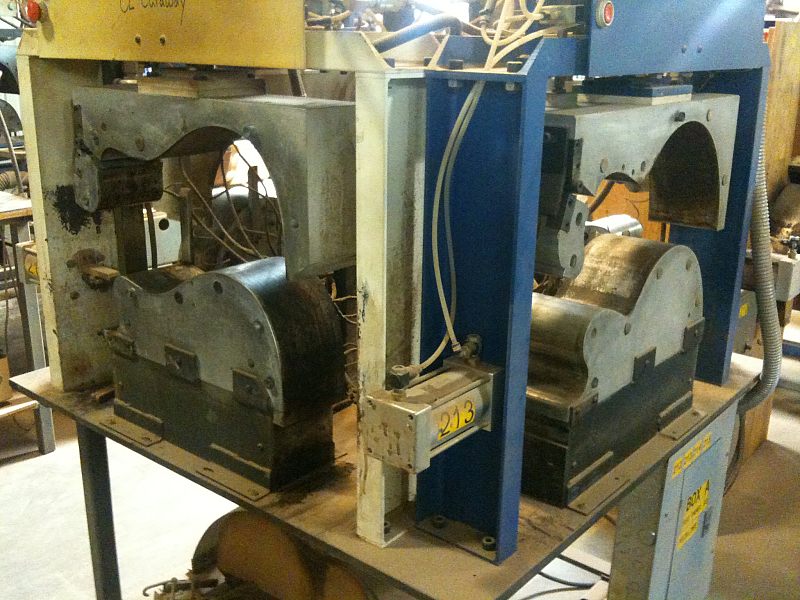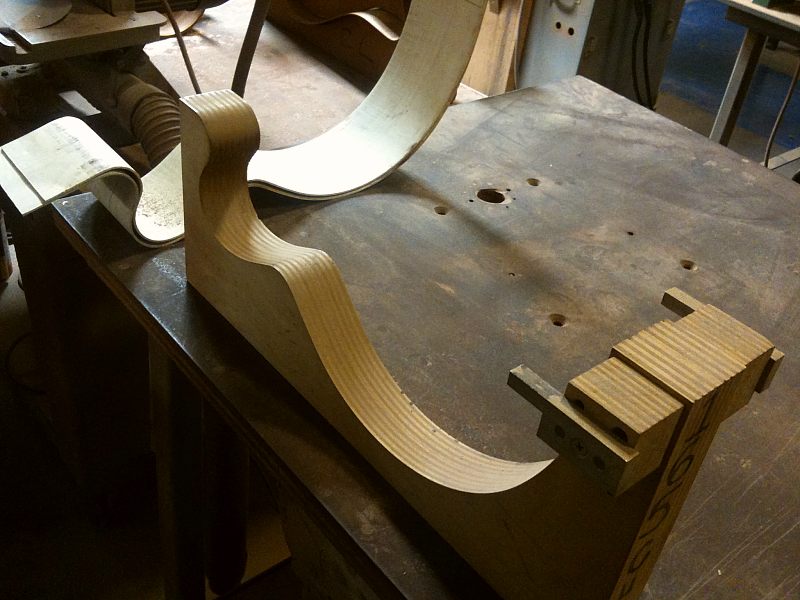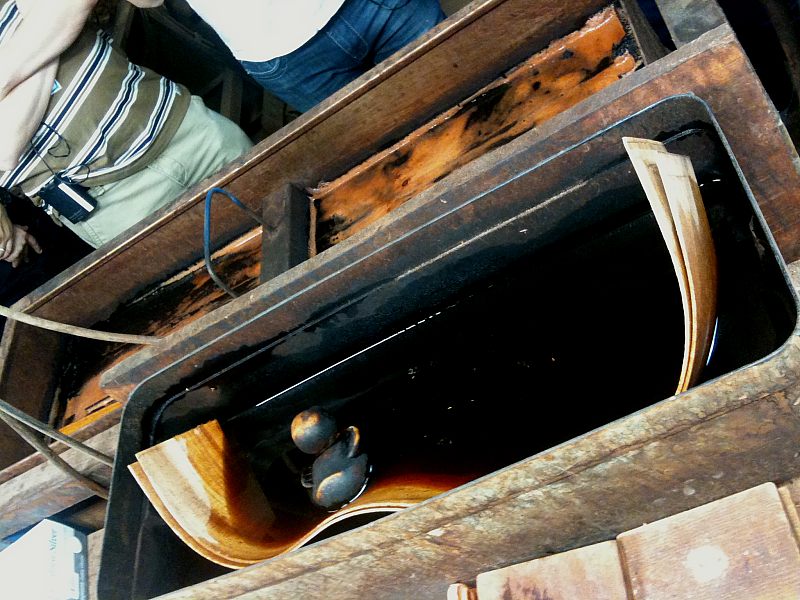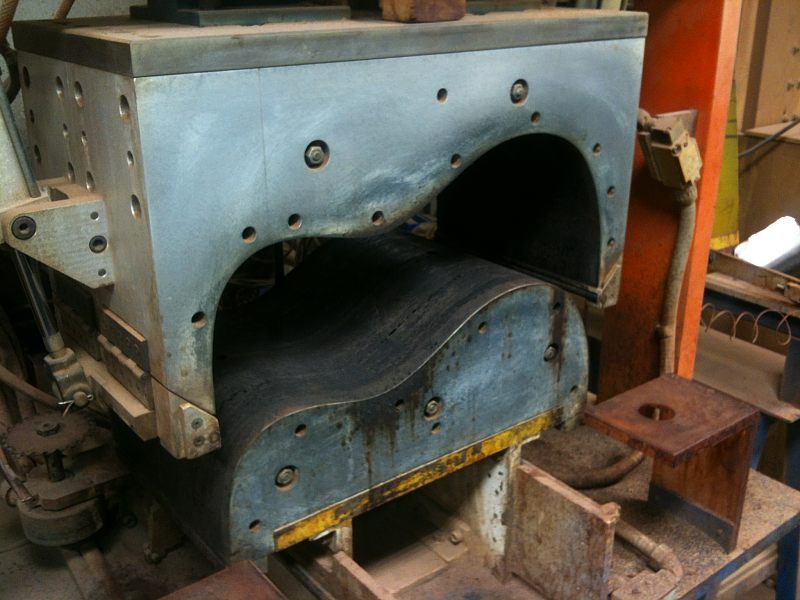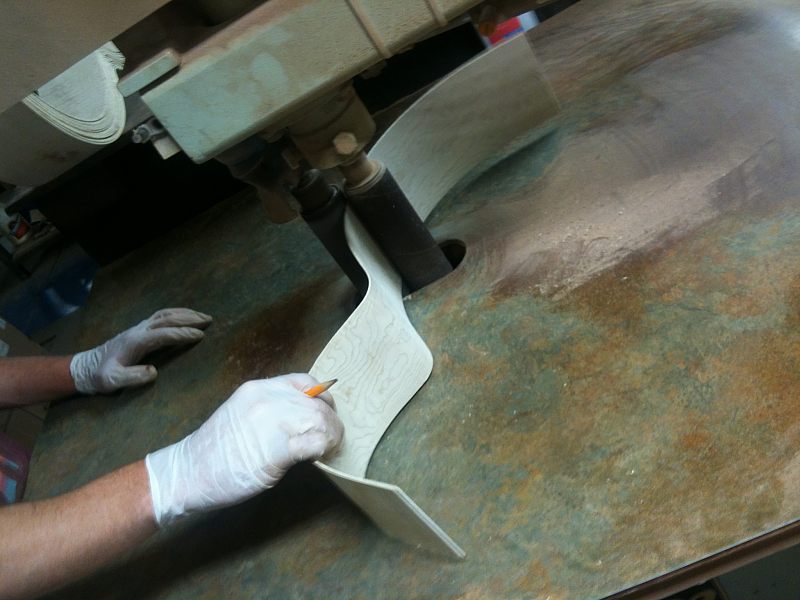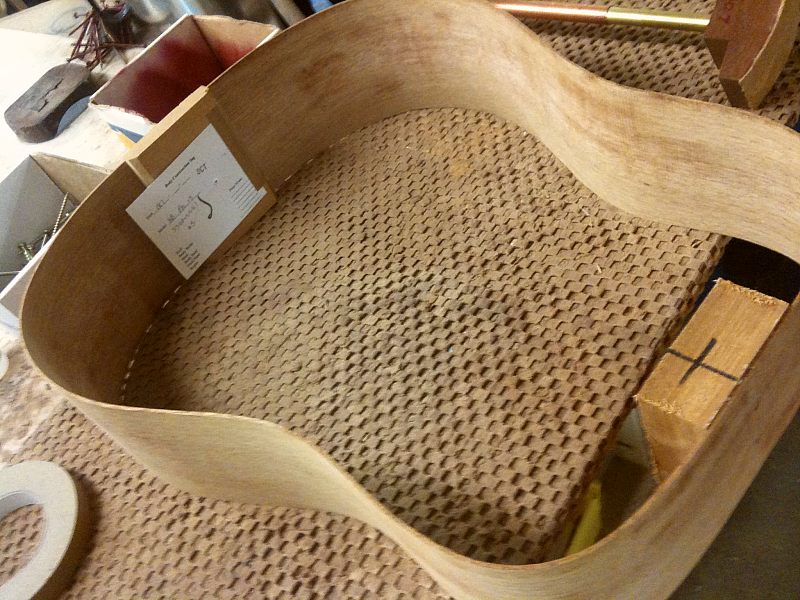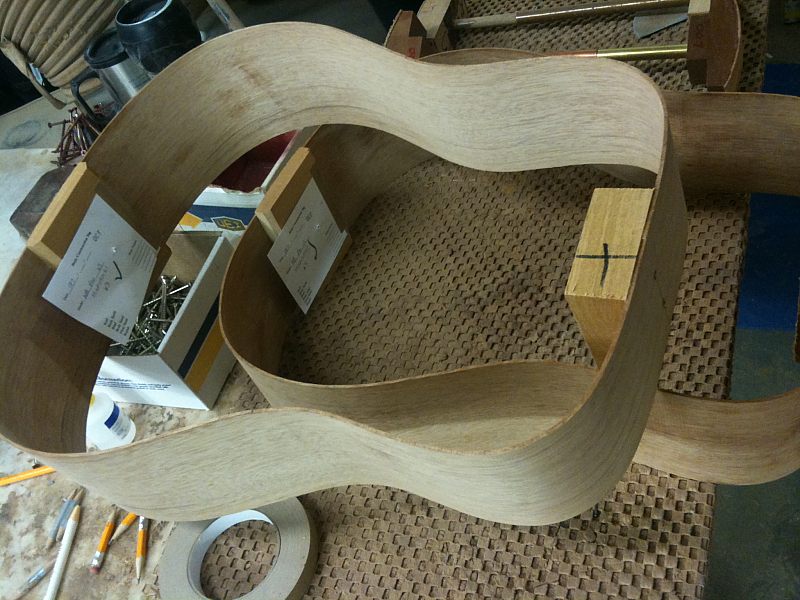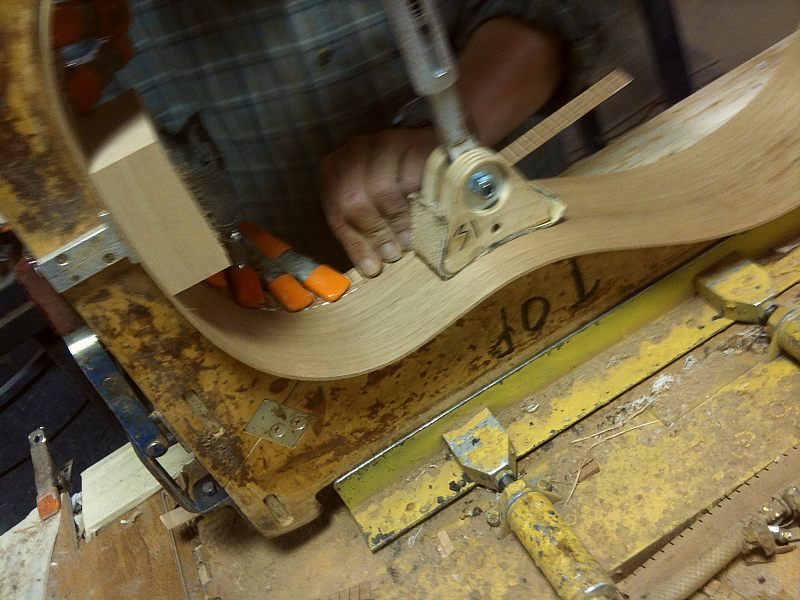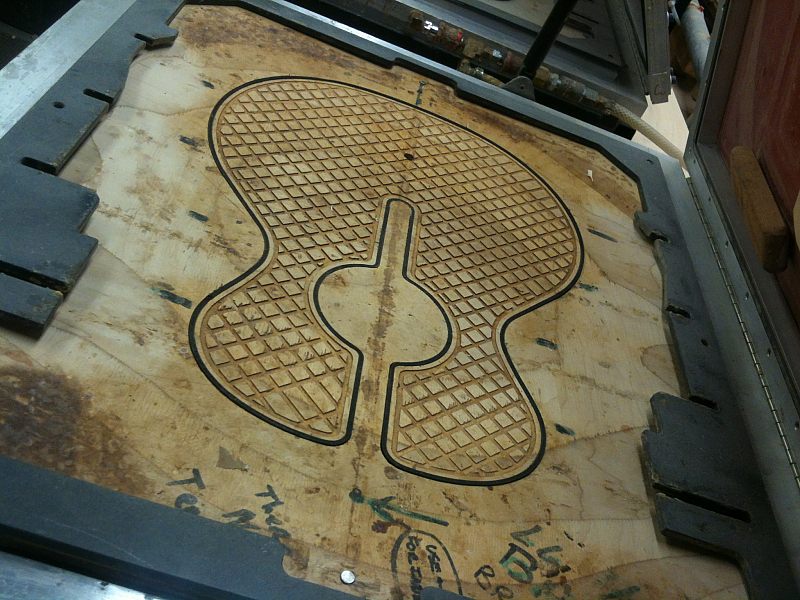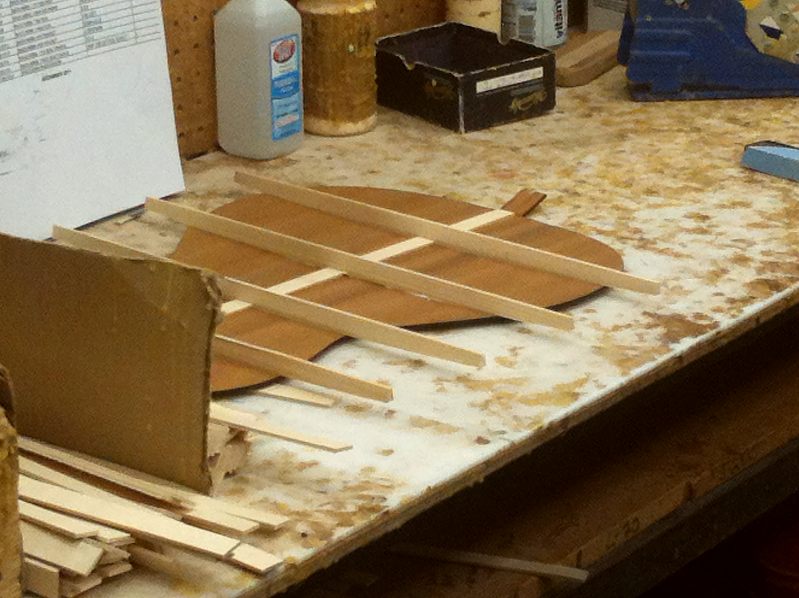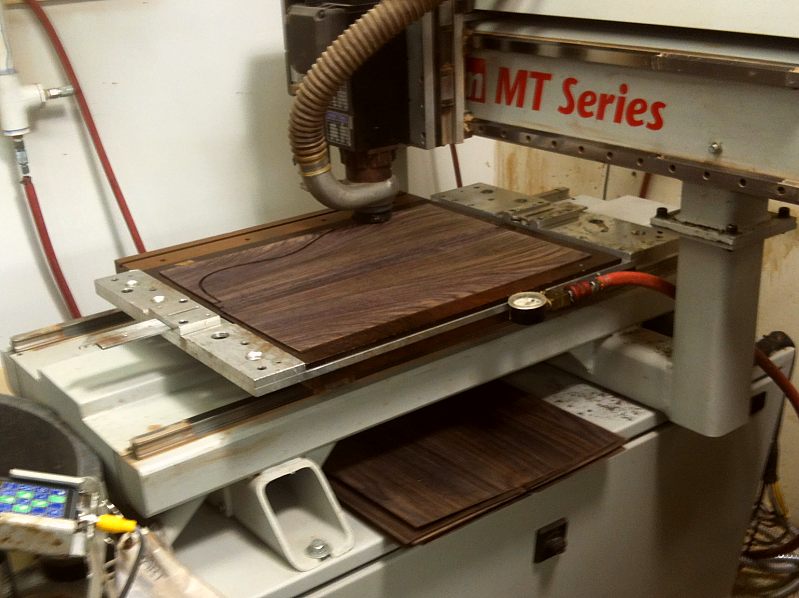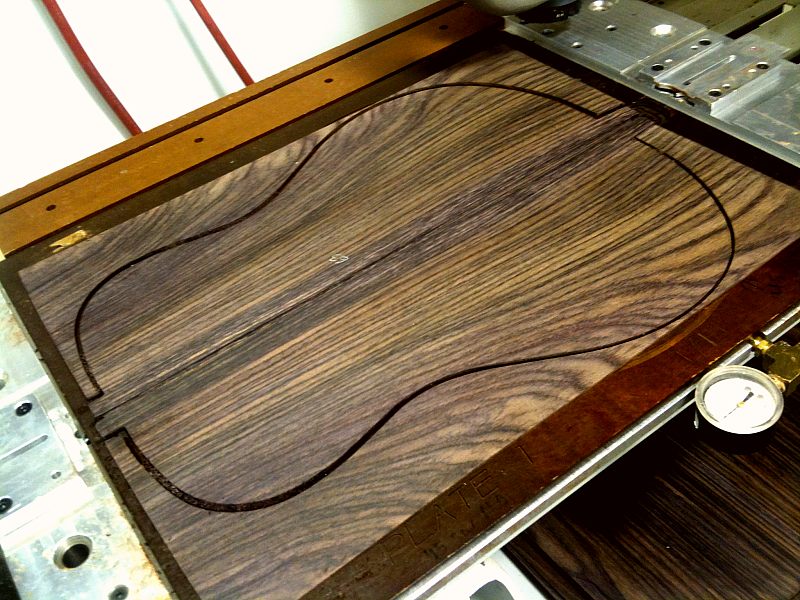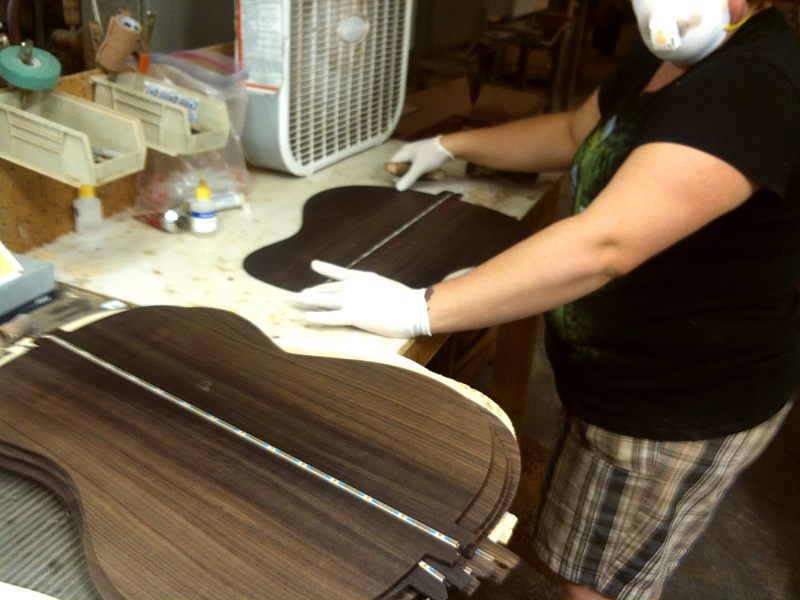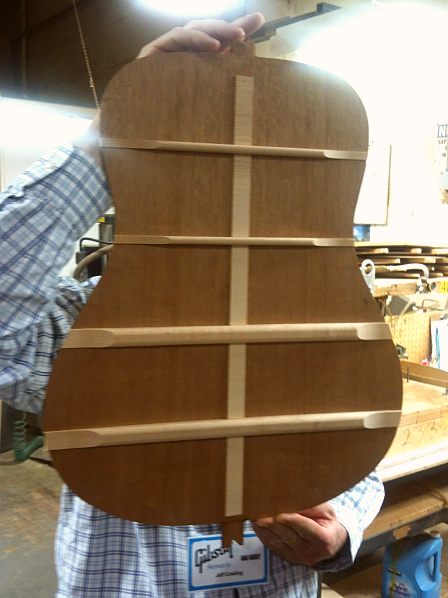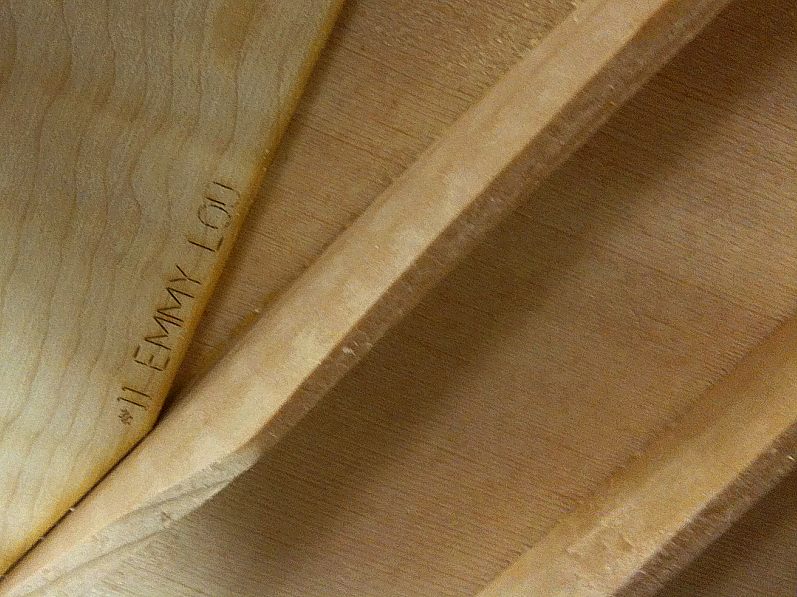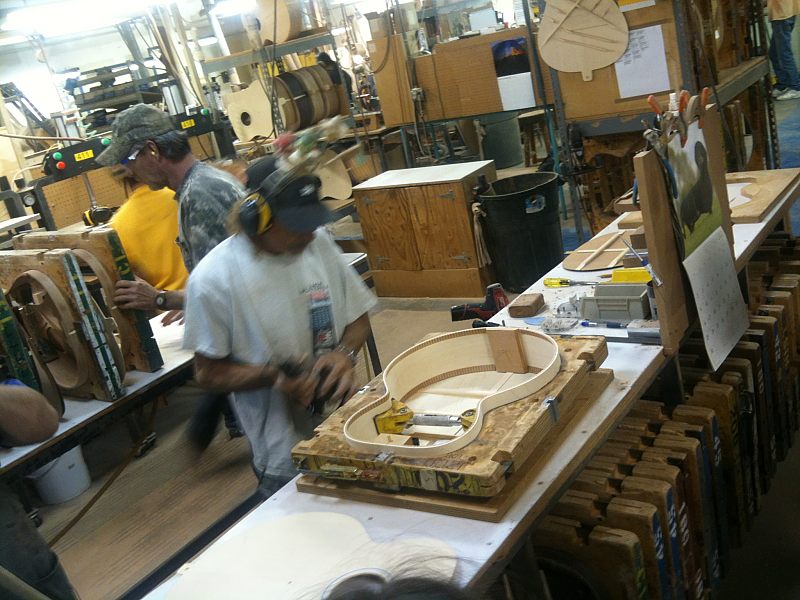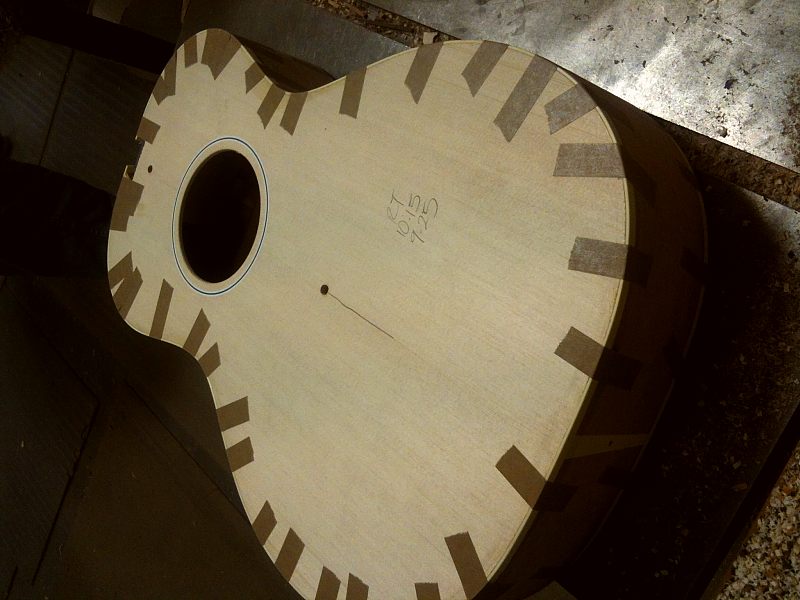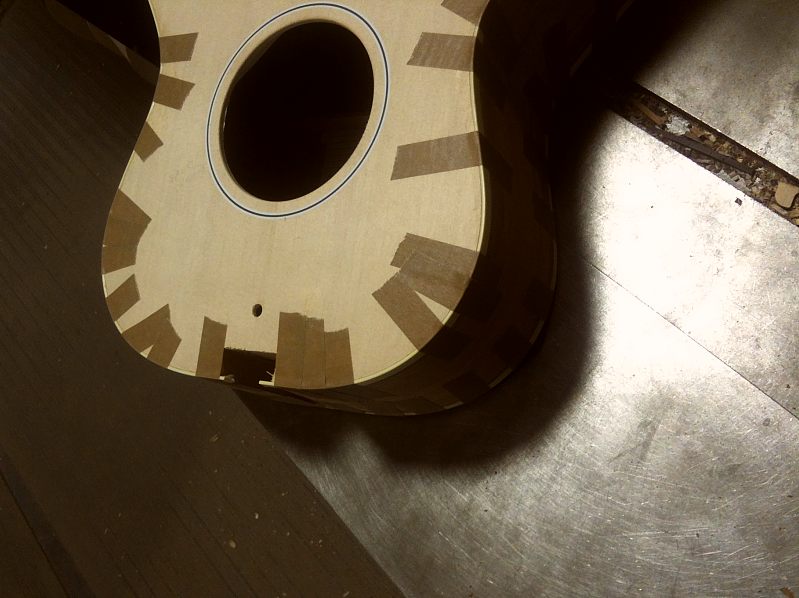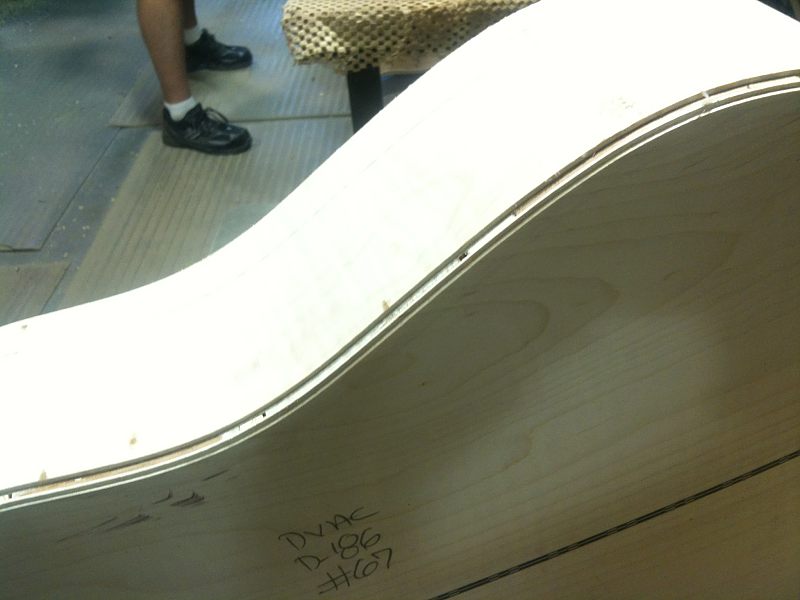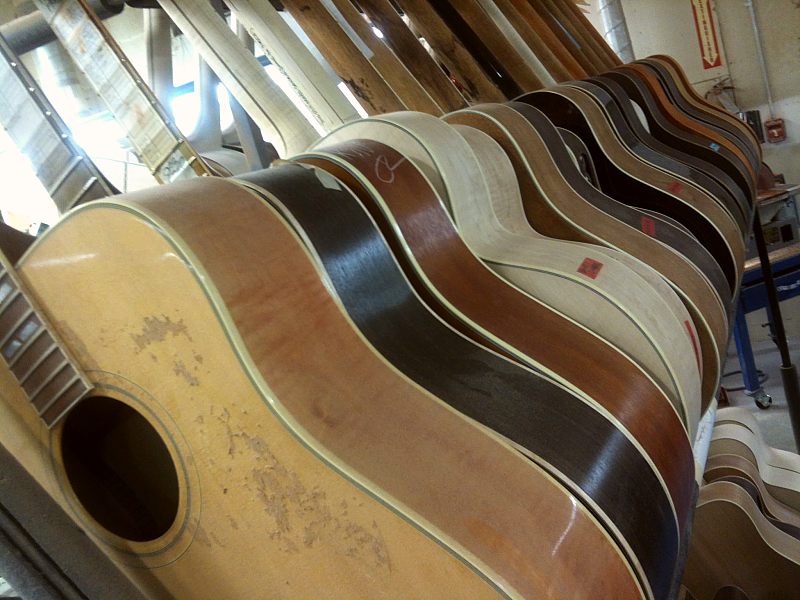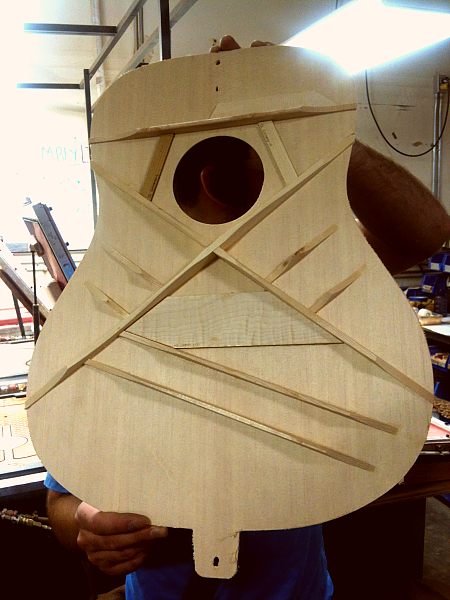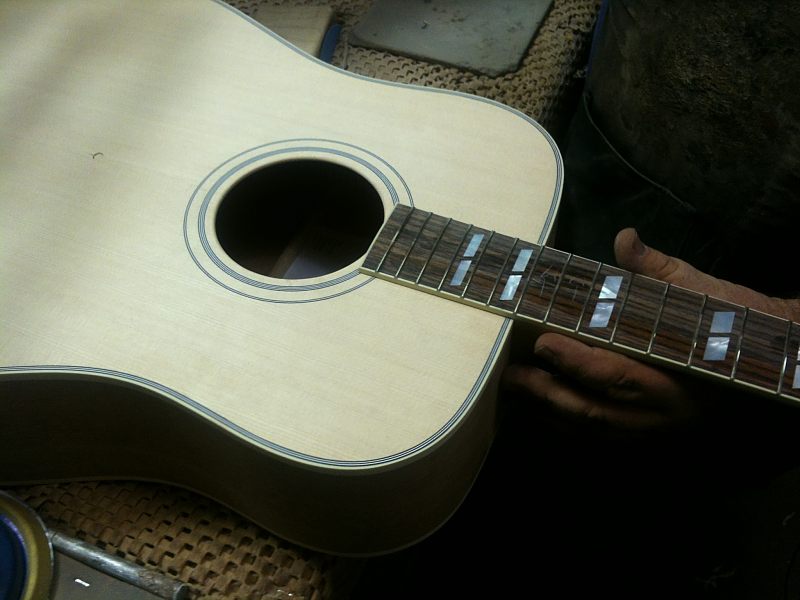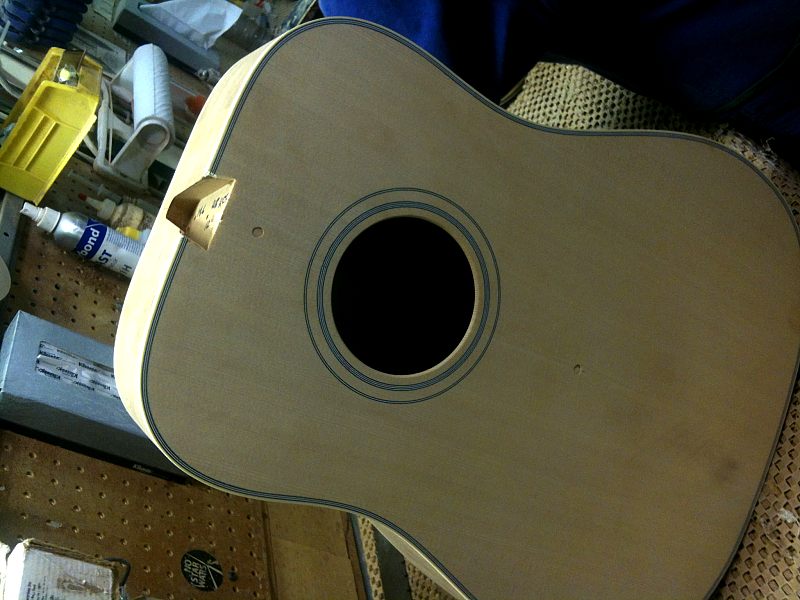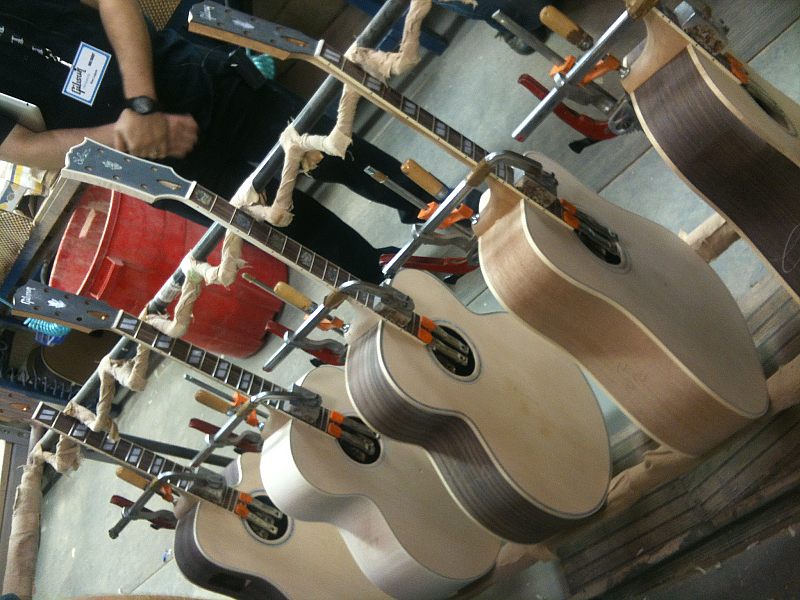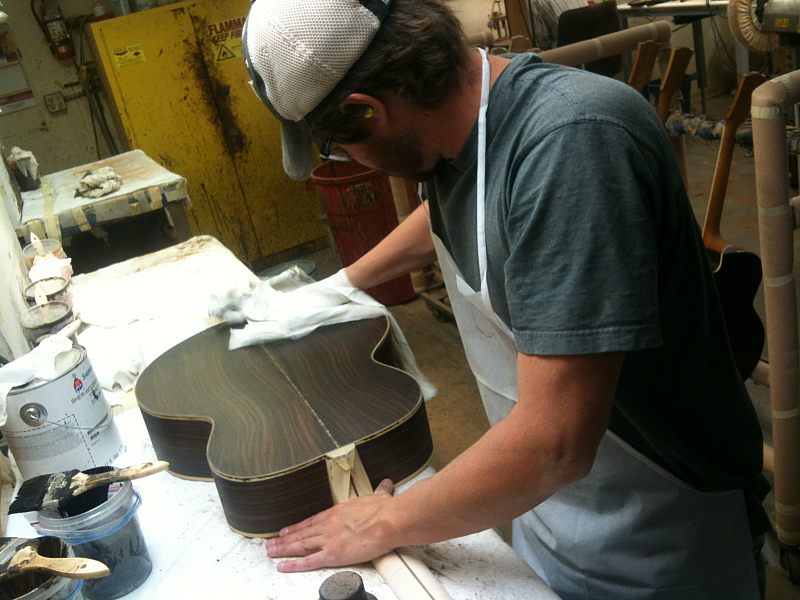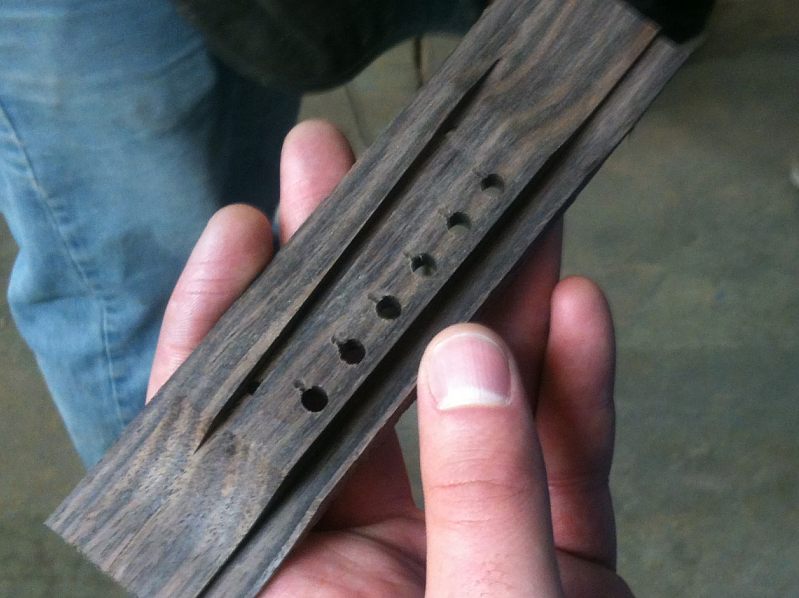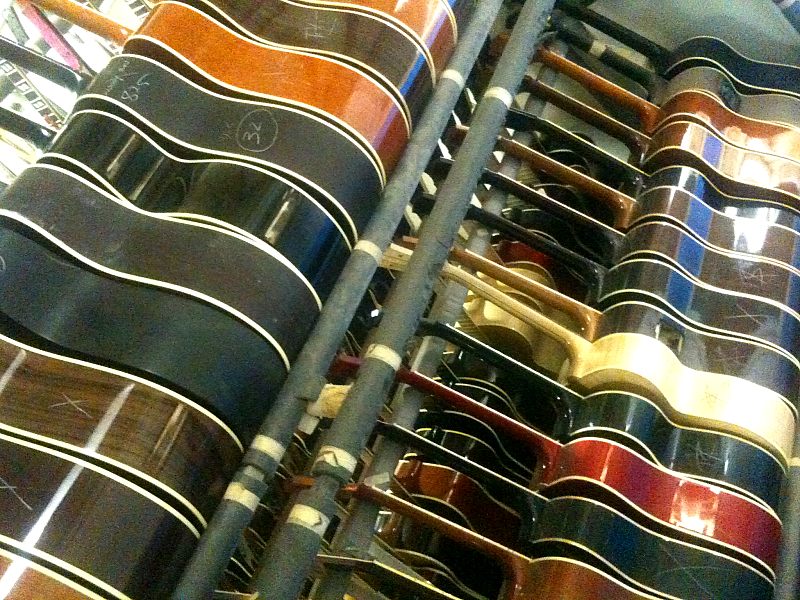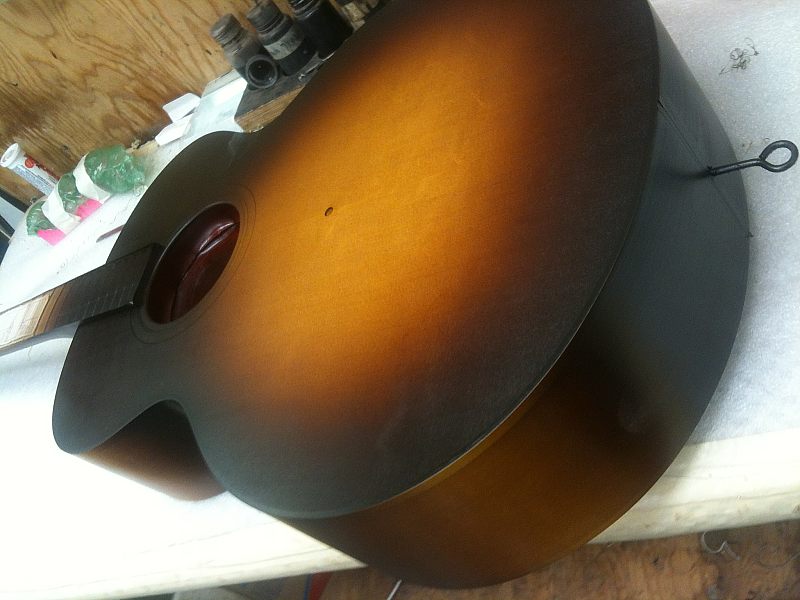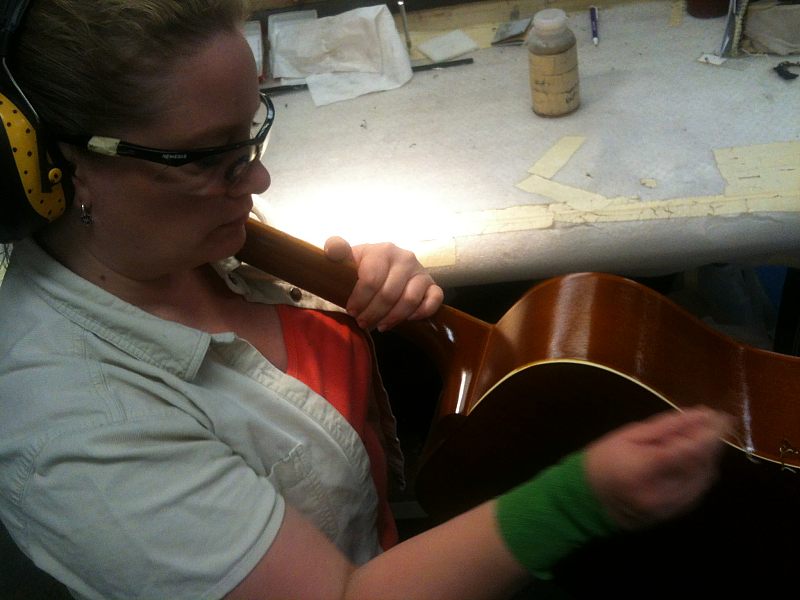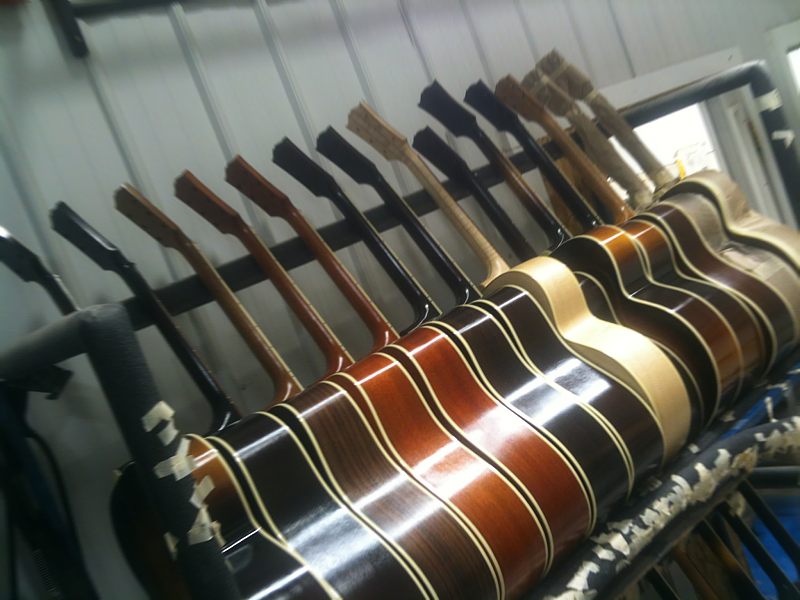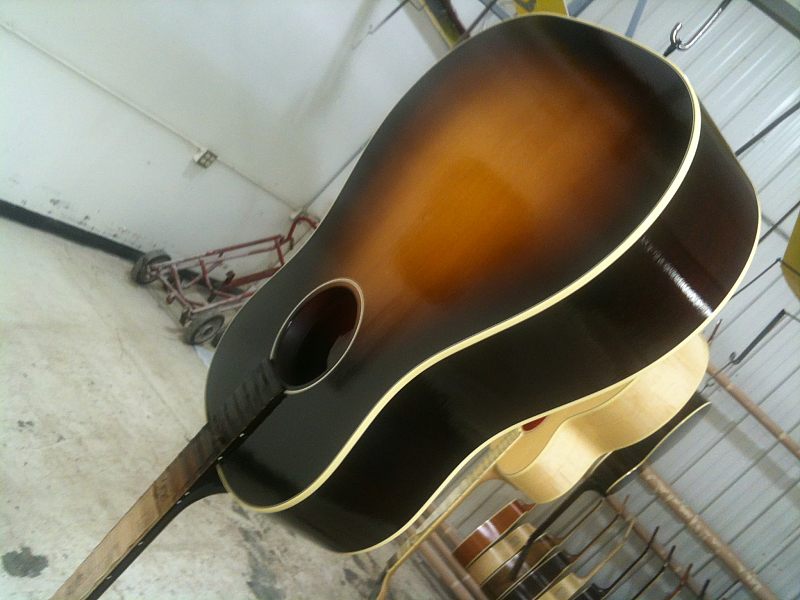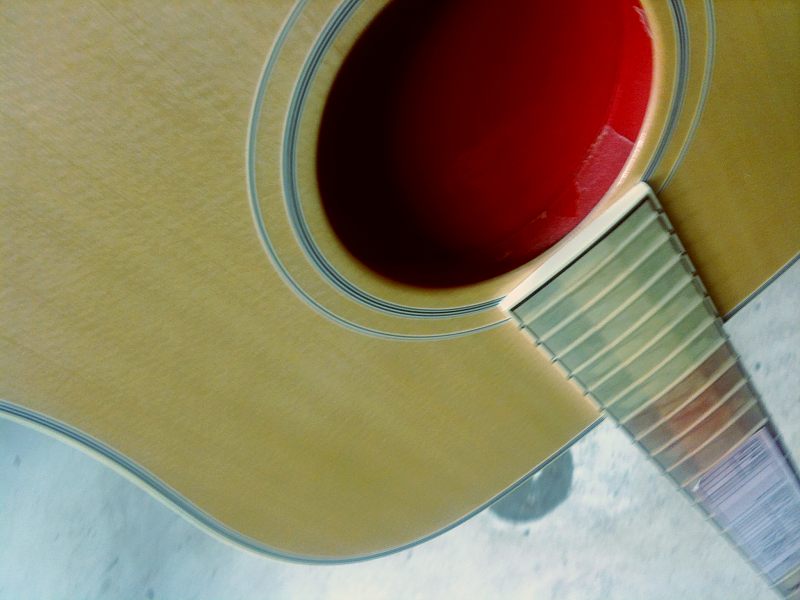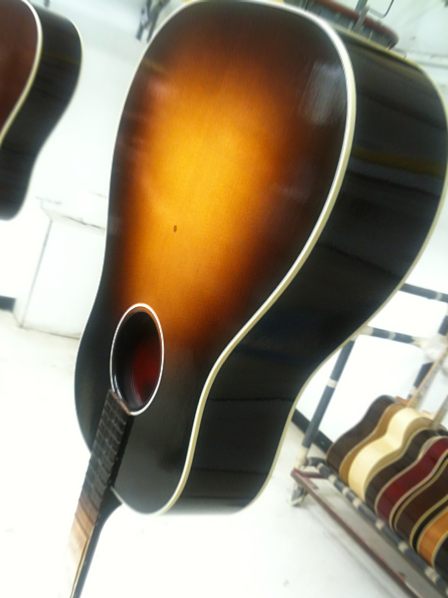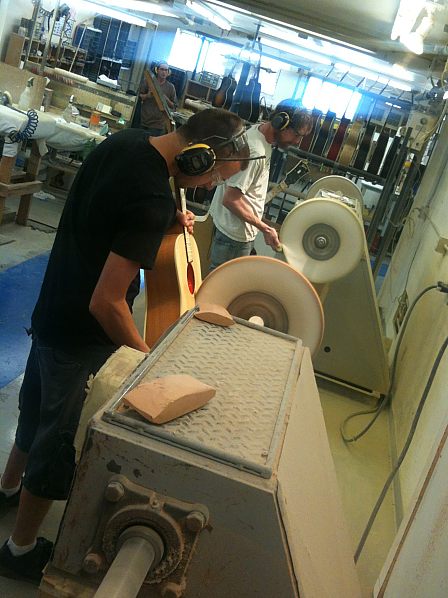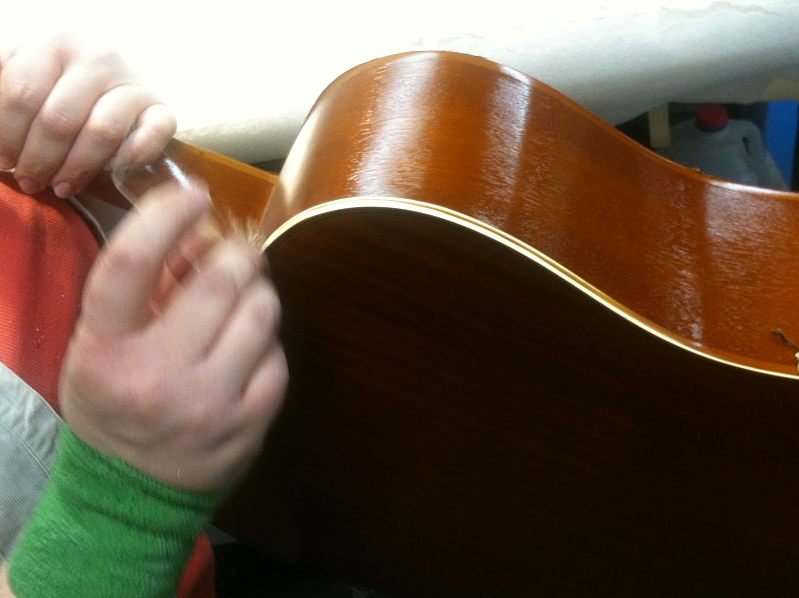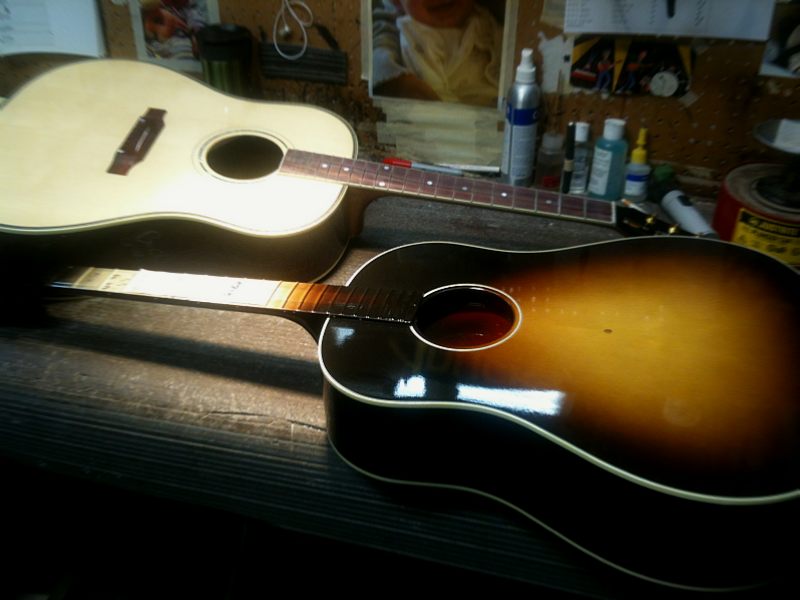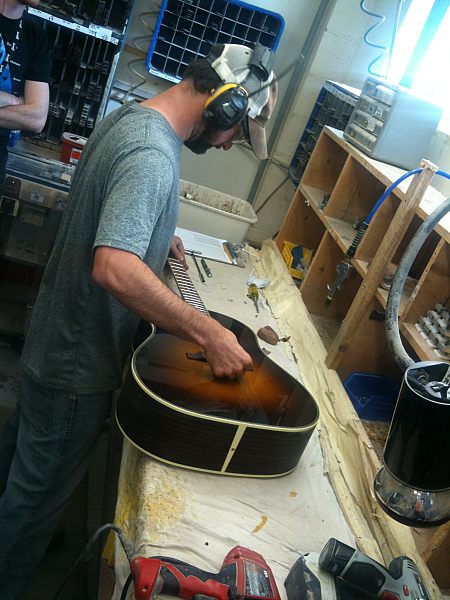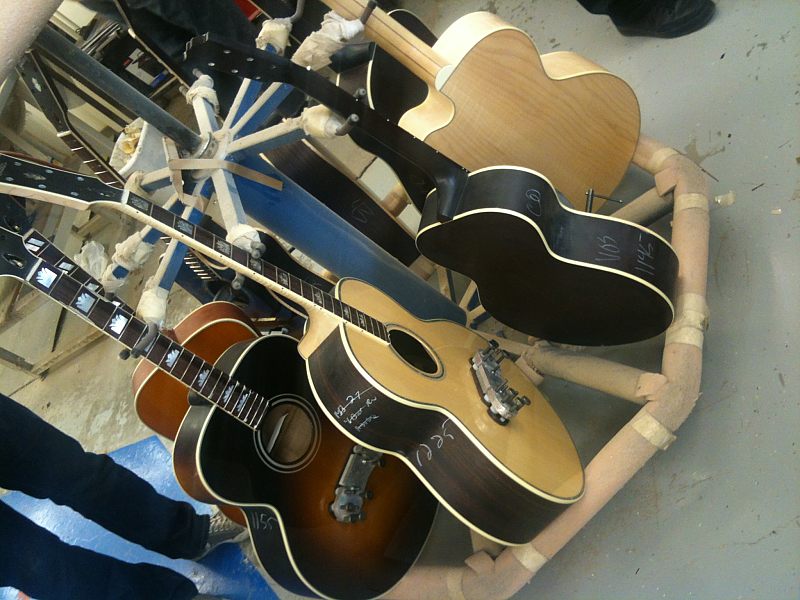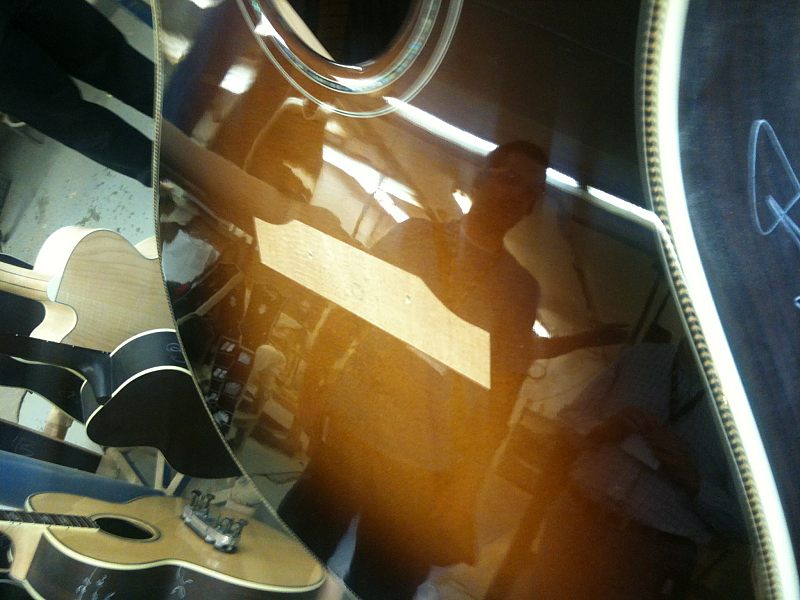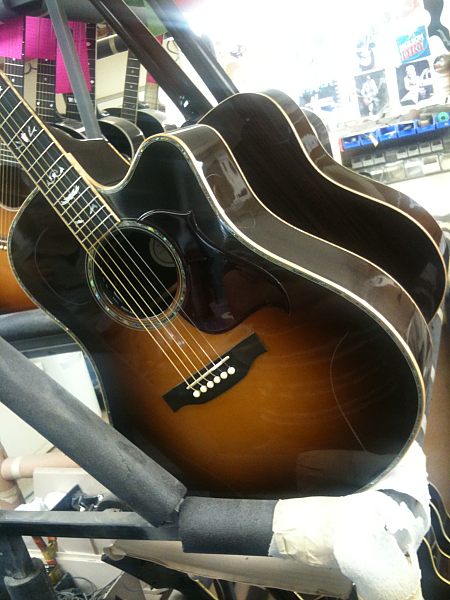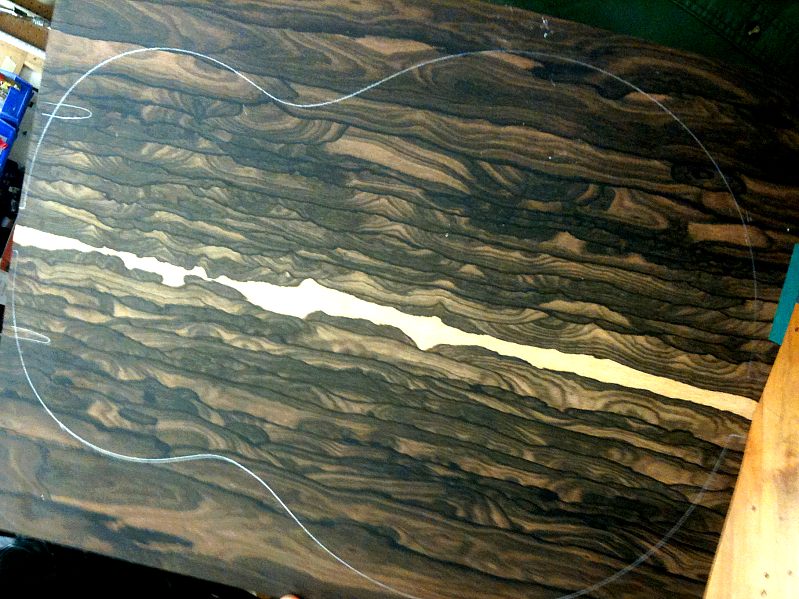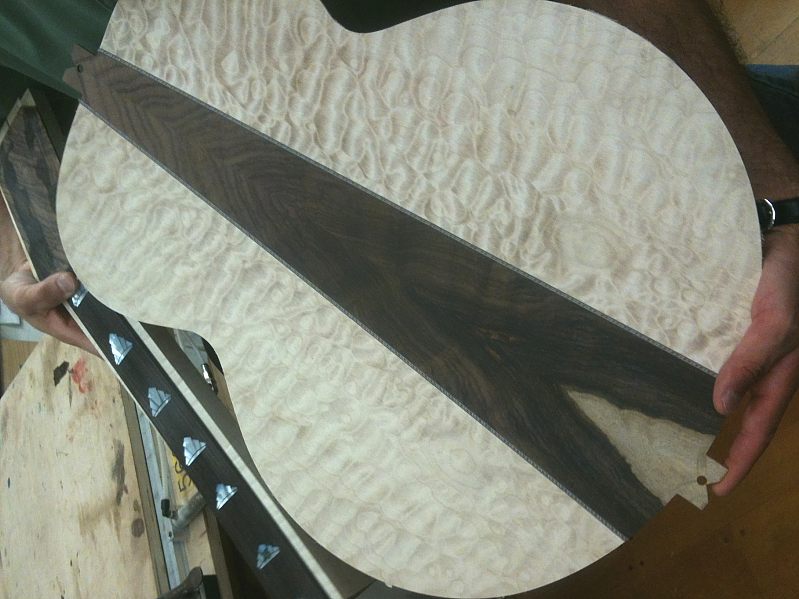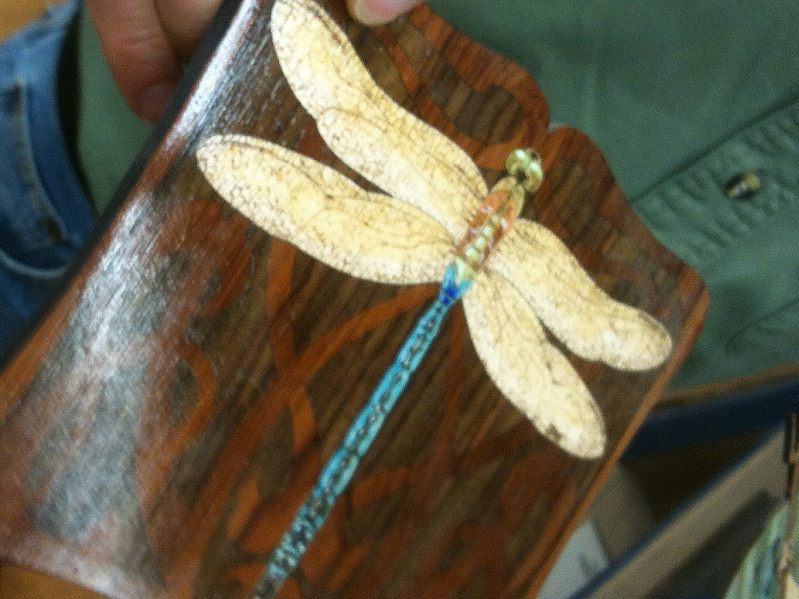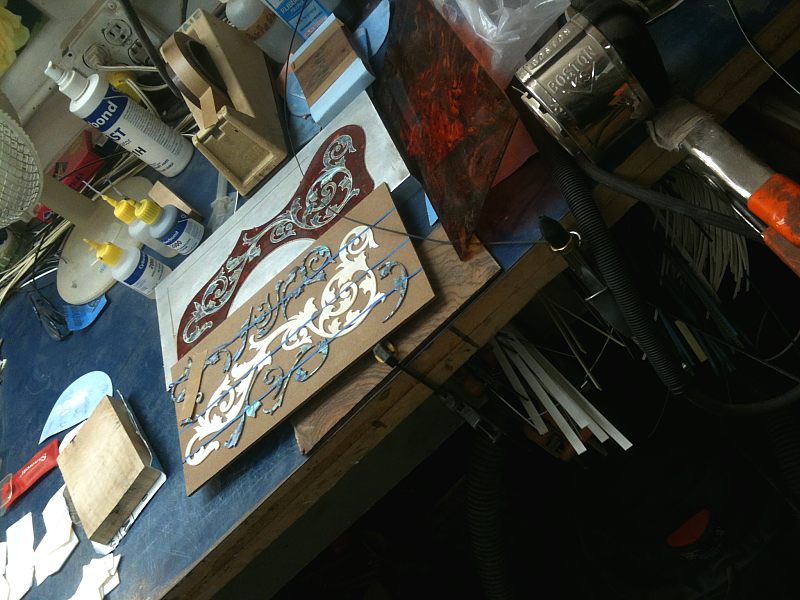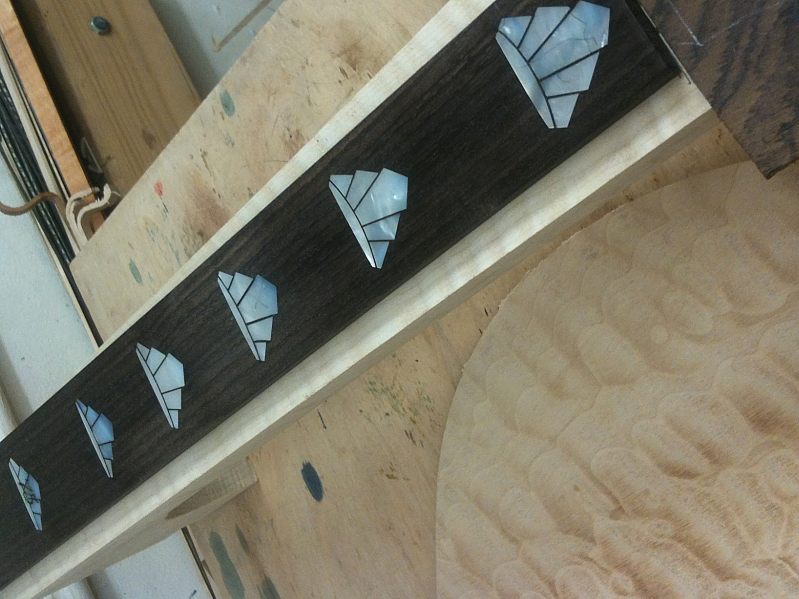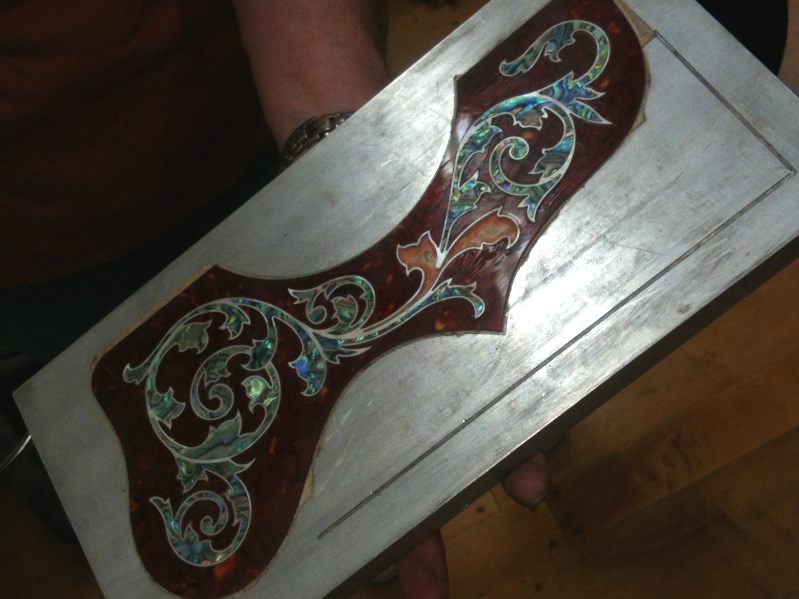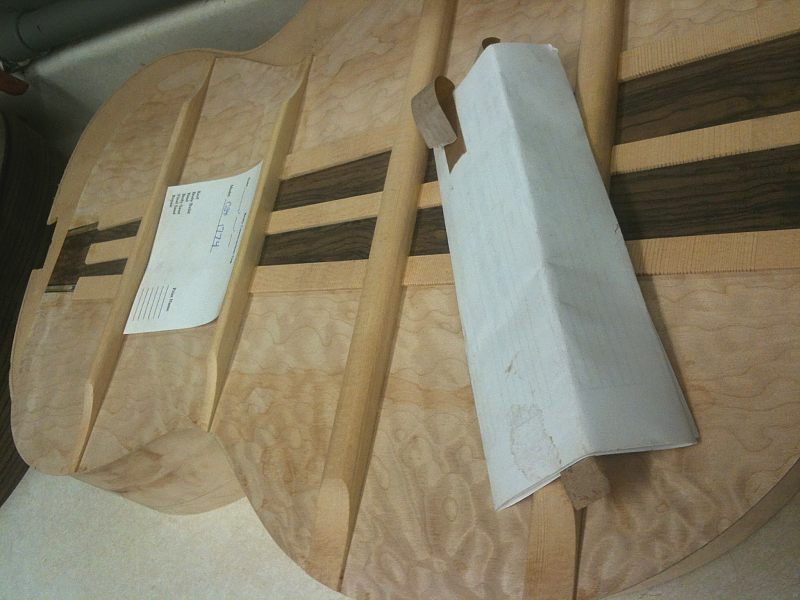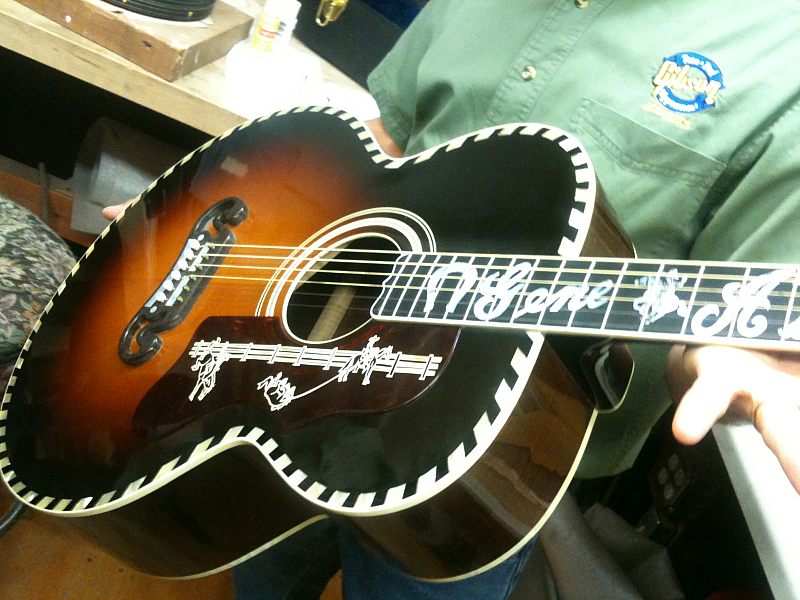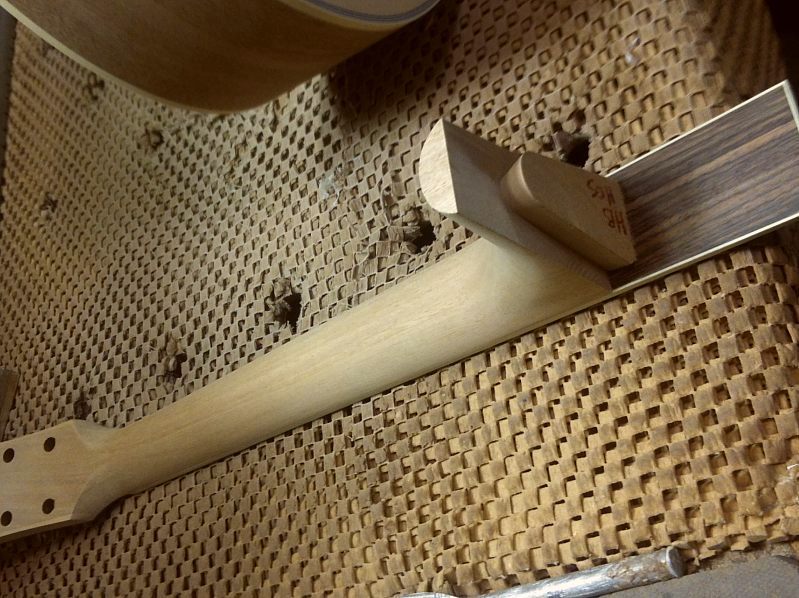Located in Bozeman Montana, the Gibson acoustic guitar factory produces over 70 hand-made instruments every single day. In September 2012 Nevin Douglas of the Twelfth Fret had the opportunity to take a tour of the factory for an in-depth look at the construction of these iconic American instruments.
[singlepic id=14141 w=845 h= float=none]
Bozeman, Montana USA
The process of building a Gibson acoustic guitar is one of refined tradition. Classic features such as dovetail neck joints and nitrocellulose lacquer finishes are standards across the entire product line. Yet subtle advancements in the guitar building process allow Gibson to build their acoustic guitars to a higher standard than ever before.
[singlepic id=14148 w=845 h= float=none]
CNC machines now handle the initial carving of the necks, tops, backs and sides. Soundholes and rosette channels are machine cut Rosette detailing is then hand-placed and sanded smooth. Top and back braces are glued into place using an ingenious suction-press. This press creates a perfectly uniform pressure as the braces are glued into place, allowing maximum strength and stability. This same press also creates the slight arch or “belly” present in all Gibson acoustic guitar tops.
[singlepic id=14174 w=270 h= float=none] [singlepic id=14172 w=270 h= float=none]
Gibson’s top braces are hand-scalloped. This allows the top to vibrate more freely, creating a more responsive guitar, without sacrificing strength and stability. Automated heat presses are used to bend side-wood into shape. Different machines are used to achieve the different body styles, such as the J-45, J-200, Songwriter Deluxe, Hummingbird, and other classic models.
[singlepic id=14159 w=845 h= float=none]
One of the long standing hallmark’s of Gibson’s acoustic guitars is their ornamentation and visual design. A great deal of time and craftsmanship goes into making sure that every single Gibson guitar is a work of art. Binding ledges are carved into the edges of each guitar before the binding itself is hand-wrapped and glued into place. Fingerboard and headstock inlays are cut and placed with delicate care.
[singlepic id=14152 w=845 h= float=none]
Every single Gibson dovetail neck joint is hand-fitted and tested. Custom tools are used to ensure that the neck angle and pitch is straight, while the fit to the body is air tight. If adjustments need to be made, the surfaces of the body joint are hand sanded until everything lines up perfectly. Traditional hide glue is used on all Gibson dovetail joints. Unlike other carpentry or wood glues, hide glue has no elastic properties. It crystallizes when dry, allowing for maximum resonance transfer between the body and neck. One of the most crucial steps in the entire construction process, neck fitting is performed by only the most skilled and experienced builders at Gibson.
[singlepic id=14210 w=845 h= float=none]
Once assembled, the guitars go to the first of 3 inspection stations. Every element of the guitar is inspected for defects in the materials or workmanship. Upon approval, the guitars are then finished with hand-sprayed nitrocellulose lacquer. The guitar then moves to the “scrapers”: a team of amazingly steady-handed individuals who scrape the freshly sprayed nitro finish off the edges of the guitar, revealing the binding underneath. This scraping is done using knives, razor blades, and other tools. And its all done free-hand!
[singlepic id=14189 w=845 h= float=none]
Once all finishing work is complete, all Gibson acoustic guitars go through buffing, final assembly, and setup. Each guitar will go through 2 more quality inspection stations before being deemed “complete and ready to ship”. All setup work is done by hand, including the bridge installation. An outline of the bridge is traced on to the newly finished guitar, then the nitro lacquer is carved away, exposing the bare wood. The bridge can now be glued directly to the top of the guitar rather than to the finish. Frets are checked and leveled, nuts and saddles are installed and cut. Then, for the first time in its life, the guitar is strung up and played!
[singlepic id=14199 w=845 h= float=none]
[singlepic id=14198 w=845 h= float=none]
In addition to the main production line, we also visited the Gibson Custom Art department. This small workshop is where some of Gibson’s master builders create the unique pieces of artwork that decorate many limited edition and special models; from fingerboard inlays, to customized headstock designs, to custom binding. Gibson utilizes a combination of hand-cut, laser-etched, and CNC carved inlay when creating their custom designs. This gives them the ability to create an incredibly wide range and variety of artwork for their custom guitars.
[singlepic id=14202 w=845 h= float=none]
[singlepic id=14204 w=845 h= float=none]
[singlepic id=14206 w=845 h= float=none]
I left the Gibson acoustic factory very much impressed. There is a very clear dedication to preserving the legacy of Gibson by staying true to history and tradition, while also improving the quality of their iconic instruments. In my opinion, they are succeeding. Gibson acoustic guitars today are the finest the company has ever built. The wood selection, joinery, and finishing work is better than ever before. Yet each guitar remains a hand-made work of art, with a personality and tone all its own.
– Nevin Douglas, the Twelfth Fret Guitar Shop
See more of our Gibson Acoustic Guitar features
See more of our Factory Tour features
For more details or to purchase an instrument contact us here
